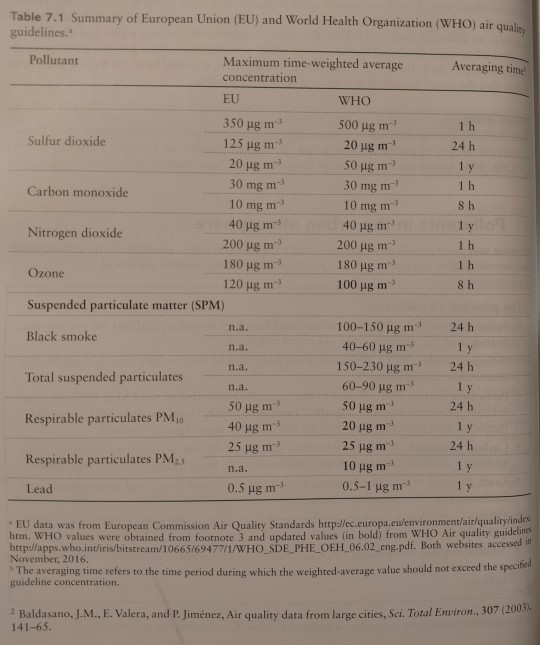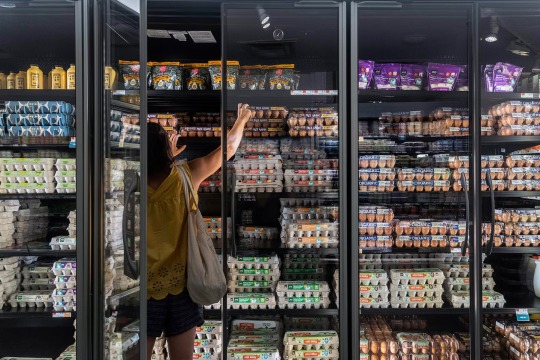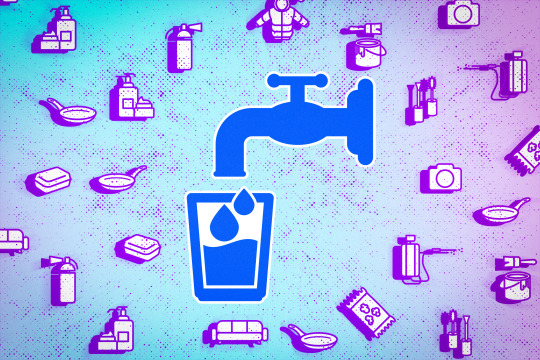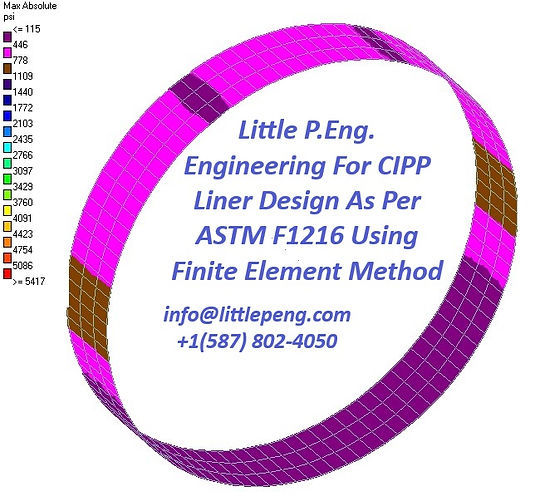#Environmental guidelines
Explore tagged Tumblr posts
Text
#Battery waste#E-waste management#Battery recycling#Environmental guidelines#Battery disposal#Battery waste rules#Battery pollution#India waste management#Battery laws India#Battery regulation
1 note
·
View note
Text
CPTED Consultant for Safer Urban Design Plans
Urban In Mind, a trusted CPTED consultant uses Crime Prevention Through Environmental Design to build safer, stronger spaces.
#Crime Prevention Through Environmental Design#Crime Prevention Through Environmental Design Principles#CPTED Experts#CPTED Consultant#Crime Prevention Through Environmental Design Consultant#Principles of Crime Prevention Through Environmental Design#Crime Prevention Through Environmental Design Strategies#Crime Prevention Through Environmental Design Guidelines#Crime Prevention Through Environmental Design (CPTED)#Crime Prevention Through Environmental Design Training
0 notes
Text
Tornado Quest Top Science Links For March 22 - 29, 2025 #science #weather #climate #climatechange #drought #tornado
Infographic courtesy NOAA/National Weather Service Greetings to all and thanks for stopping by. The tornado and severe weather season is well underway with 2025 having already seen several substantial severe weather and tornado events. The bulk of the activity is yet to come. Your tornado safety information will be a focal point this week. As usual, there are several thought provoking science…

View On WordPress
#2025#citizen science#climate#climate change#climatology#cocorahs#college#doge#drought#environment#environmental protection agency#epa#higher education#meteorology#national weather service#NOAA#noaa weather radio#precipitation#public health#science#spring#tornado#tornado safety#tornado safety rules#tornado sheltering guidelines#trump administrataion#united states#university#us drought monitor#USA
0 notes
Text

Explore the EU regulatory landscape for environmental risk assessments of pharmaceuticals. Learn about key requirements, guidelines, and compliance strategies.
#Environmental Risk Assessments#Pharmaceuticals Environmental Impact#EU Regulatory Landscape#EMA Guidelines#Pharmaceuticals ERA#Environmental Risk Mitigation#Pharmaceuticals Compliance
0 notes
Text
MBR vs. MBBR: Which Sewage Treatment Plant (STP) is Right for You?
When it comes to wastewater treatment, selecting the right Sewage Treatment Plant (STP) is crucial for maintaining environmental standards, meeting regulatory compliance, and ensuring long-term sustainability. In India, the Pollution Control Board (PCB) has set clear guidelines for water treatment practices, prompting industries and municipalities to adopt efficient technologies. Among the…
#cost-effective STP#effluent quality#environmental sustainability.#MBR vs MBBR#Membrane Bioreactor#Moving Bed Biofilm Reactor#PCB guidelines#sewage treatment#STP systems#Wastewater Treatment#water reuse systems
0 notes
Text
Everything You Require to Understand about a Building Permit in Seattle

If this is your first permit process in Seattle, it may not seem very safe. But, if you understand your requirements and follow a proper step-by-step approach, then it’s easy. Getting the appropriate building permit is critical to build a new home or remodel an older property.
A Seattle building permit requirement
The building permit is an official document needed to begin construction, renovation or structural modification works. Here’s why it’s crucial:
Compliance with Laws: Conforms to local zoning regulations and building codes.
Safety Assurance: Public safety and the structural integrity of buildings are protected.
Avoidance of Penalties: It prevents legal issues, project shutdowns and associated fines.
Losing a permit can stop you from working and cause you legal trouble.
What Kinds Of Projects In Seattle Need A Permit?
Building permits are required for:
New constructions.
And cons include major renovations or remodels.
Such as the removal or addition of Walls.
Installing of decks, fences, or retaining walls over a certain height.
You usually don’t need a permit if you’re painting or doing some minor repairs, but you can never know for sure.
Remodeling Requirements in Seattle, WA
Before applying, gather the necessary documentation and ensure your project meets these prerequisites:
Project Plans:
Architectural and structural drawings in detail.
Property lines and project location are shown on site plans.
Zoning Information:
Confirm compliance with Seattle zoning laws, which, among other things, limit height, setbacks, and use of land.
Environmental Compliance:
Suppose your project is near wetlands or steep slopes, for example. In that case, you must determine whether your project requires an environmental review.
Licensed Contractor Information:
If you have a licensed contractor, provide details of him.
Permit Fees:
The fees depend on your project's size and value.
Building Permit Application in Seattle
Follow these steps to streamline the application process:
Understand Your Project’s Needs:
To determine what permits are required, look at the Seattle Department of Construction and Inspections (SDCI) website.
Express licenses may be available for smaller projects.
Prepare Your Application Materials:
Floor plans, elevations, structural calculations and energy code compliance forms are included.
Submit Your Application:
To apply online, use the Seattle Services Portal.
To obtain the passport, you must adequately upload all the required documents and provide a detailed project description.
Pay the Permit Fees:
You can pay your fees online or in person.
Wait for the Review Process:
Plan checks, zoning compliance, and environmental assessments by the SDCI will review your application.
Address Corrections Promptly:
If reviewers raise issues, answer swiftly and politely to avoid delay.
Schedule Inspections:
Once you have your permit, you must schedule inspections at different phases of your construction process.
Tips for your successful permit application.
Double-Check Your Plans: Complete and accurate documentation is needed before submission.
Hire Professionals: If you have architects or contractors who work with Seattle’s building codes, then you can work with them to navigate the process with ease.
Apply Early: Plan accordingly; permit processing takes weeks or months (depending on the permit).
Monitor Application Status: To stay updated on your application, use the Seattle Services Portal.
Seattle Building permits have unique challenges.
Seattle’s climate and architectural diversity present specific challenges:
Environmental Factors: High humidity and rain will influence some construction timelines and material choices.
Zoning Restrictions: Projects must fit into the city’s rigid zoning ordinances.
Architectural Styles: Seattle’s juxtaposition of modern with traditional requires specific responses.
Partnering with professionals who understand these nuances makes you feel confident about your permit process.
When Is No Building Permit Required?
Although permits are essential for significant projects, their need is not critical for minor projects like painting, tiling, or minor repairs. But it’s always safer to double-check with the SDCI.
Conclusion
Getting a building permit in Seattle ensures you don't build your construction project without following local laws and standards. Following a systematic approach (understanding requirements, thorough documentation, etc.) with experienced professionals will save you time, spare you complications, and bring your project to life successfully.
Whether building a new home or updating an existing one, having proper permits in place is essential to a smooth and trouble-free experience. If you plan, you'll be confident you can complete your project.
#Seattle Building Permits#Building Permit Process#Construction Regulations Seattle#Zoning Compliance Seattle#Environmental Review Seattle Projects#Home Renovation Permits Seattle#SDCI Permit Guidelines#Building Code Requirements Seattle#Architectural Plans for Permits#Seattle Construction Tips
0 notes
Text
New Directions Environmental Studies Books 1: Engaging Learning
Viva Education presents New Directions Environmental Studies Books 1, a perfect blend of innovation and engagement for young learners. Aligned with NEP-NCF guidelines, this series emphasizes skill-based learning with digital tools like E-books, animations, lesson plans, and Viva AI Buddy. Interactive exercises, worksheets, and activities such as "Elevate Your Skills" inspire critical thinking and environmental awareness. Packed with real-world examples and practical applications, these books ensure holistic development. Transform environmental studies into an engaging journey with New Directions Environmental Studies Books!
#New Directions Environmental Studies Books#school book publisher#book publishing#school book online#book publishers in india#books#schoolbooks#social studies textbook#bookpublisher#maths school book publishers#books online#Environmental Studies Books 1#Environmental Studies Books#NEP Books#book publisher#book publishers#book for school#cbse school#schools#school#Viva AI Buddy#digital tools#NEP-NCF Guidelines#Interactive exercises#Interactive Books#Engagement Books
1 note
·
View note
Text

#𝐄𝐎𝐒𝐇 - 𝗨𝗞 𝗘𝗻𝘃𝗶𝗿𝗼𝗻𝗺𝗲𝗻𝘁 𝗦𝗮𝗳𝗲𝘁𝘆 𝗧𝗿𝗮𝗶𝗻𝗶𝗻𝗴 𝐂𝐨𝐮𝐫𝐬𝐞𝐬#Award in EHS Guidelines- Environment#Health & Safety#Award in Environmental and Social Action Plan (ESAP) for Managers#Award in Environmental Management System Audit#Techniques & Best Practices#Award in Environmental Quality Monitoring & Analysis#Level 2- Award in Environmental Principles#Level 3- Award in Environmental Management#Level 4- Award in Environmental Management & Legal Compliance#Contact Us:#Mob:#+919787872866#Email:#[email protected]#Web:#www.cosmostrg.com#WhatsApp Channel :#https://whatsapp.com/channel/0029VaHMYayGufJ45OH4Xo1n#WhatsApp Group :#https://chat.whatsapp.com/IunhDueyuLsEPc9SkB7dlK#eoshcourses#eoshcourse#eosh#eoshuk#environment#environmentaleducation#environmentalawareness#enviromentguide#environmenttraining
0 notes
Text
In order to make integrative comparisons of air quality in cities around the world, a combined multi-pollution index (MPI) has been proposed, based on WHO guideline values.
"Environmental Chemistry: A Global Perspective", 4e - Gary W. VanLoon & Stephen J. Duffy
#book quote#environmental chemistry#nonfiction#textbook#comparison#air quality#multi pollution index#mpi#proposal#world health organization#guidelines
0 notes
Text
Some of the WHO guidelines are summarized in Table 7.1, but many countries and groups of nations have established their own regulations.²

"Environmental Chemistry: A Global Perspective", 4e - Gary W. VanLoon & Stephen J. Duffy
#book quotes#environmental chemistry#nonfiction#textbook#european union#world health organization#air quality#guidelines#regulations#sulfur dioxide#carbon monoxide#nitrogen dioxide#ozone#pollutants#suspended particulate matter#particulate matter#black smoke#respiration#lead
0 notes
Text
Antibiotic resistance and the One Health strategy: a review with scientific evidences
Background Antibiotic resistance is one of the most serious global threats to public health. Antibiotics, which are essential for the treatment of bacterial infections, have become progressively less effective due to the spread of resistant bacteria. This phenomenon not only compromises the ability to treat common infections, but also to perform surgical procedures and cancer treatments that…
#antibiotic resistance#antibiotics abuse#bacterial infection#bacterial strains#clinical guidelines#environmental pollution#global policies#nosocomial infection#One Health strategy#public health#sanitary surveillance
0 notes
Text
Jamshedpur Intensifies Fight Against Illegal Mining
New Task Force to Enforce Stricter Regulations and Conduct Regular Raids District officials launch comprehensive strategy to combat unauthorized mining activities, protect revenue, and ensure environmental compliance. JAMSHEDPUR – A newly established task force has been established by local authorities to implement a comprehensive campaign to prevent illegal mining operations and enforce…
#जन��ीवन#brick kiln revenue collection#District Mining Task Force operations#environmental protection in mining#forest department coordination#Jamshedpur illegal mining crackdown#Life#mining royalty collection#National Green Tribunal guidelines enforcement#sand ghat regulation#Sustainable Mining Practices#vehicle overloading prevention
0 notes
Text
The Coyote Connection: Promoting Respectful Coexistence in Our Communities
In our natural spaces like the Richard St. Barbe Baker Afforestation Area and the George Genereux Urban Regional Park, coexistence with wildlife, including coyotes, is essential for maintaining the delicate balance of our ecosystems. As we venture into these semi-wilderness habitats, understanding how to peacefully interact with coyotes becomes paramount. Respect Nature, Respect Coyotes: Let’s…
View On WordPress
#animal behavior#animal protection#animal welfare#biodiversity#coexistence#coexisting with coyotes#Community Engagement#coyote awareness#coyote behavior#coyote behavior patterns#coyote coexistence#coyote conservation#coyote control#coyote deterrents#coyote ecology#coyote education#coyote habitat#coyote habits#coyote management#coyote precautions#coyote research#coyote safety#coyote safety guidelines#coyote safety measures#coyote safety precautions#coyote sightings#coyotes#environmental awareness#George Genereux Urban REgional Park#human-wildlife conflict
1 note
·
View note
Text

Research shows that consumers are willing to pay an average of 58 to 92 percent extra for organic over conventional produce and nearly 200 percent more for products like eggs. But some experts say the difference in food safety and nutritional value is negligible between organic and conventional products. Photograph By Hiroko Masuike, The New York Times/Redux
Health Food Packaging Buzzwords Are Confusing. This Guide Can Help.
We Wxplain the Difference Between Organic, Non-GMO, and Certified Naturally Grown—and Whether They're Worth Paying a Premium For.
— By Leah Worthington | March 13, 2024
Grocery shopping can be a dizzying experience these days.
If choosing among a dozen different yogurt flavors wasn’t overwhelming enough, there’s also the growing, confusing list of buzzwords on packaging labels. Is there a nutritional difference between organic Greek and regular? Is naturally grown healthier? What does it even mean for yogurt to be bioengineered?
While ostensibly created to educate consumers about how food is grown or processed, excessive labeling can have the opposite effect.
“Food labels can be very useful. And I'm saying ‘can be’ because sometimes they're not,” says Ariana Torres, an agricultural economist and associate professor at Purdue University. The problem, she says, is that too much information can muddy the waters—making it harder for consumers to determine what labels actually mean and distinguish real certifications from empty marketing.
Food marketing experts weigh in on the most common food labels to demystify the claims and help consumers make educated choices about whether to pay the premium.
Organic
The term “organic,” which was first used in reference to farming in 1940, has come to describe a multi-billion dollar industry that represents nearly 6 percent of all retail food sales in the United States. And market research has shown that, while price premiums have fluctuated over the years, they’re generally trending upwards, with consumers willing to pay an average of 58 to 92 percent extra for organic over conventional produce and nearly 200 percent more for products like eggs. But what does organic mean, exactly?
Organic encompasses a broad spectrum of factors, from soil quality to pest control and use of additives, according to the United States Department of Agriculture (USDA), which regulates the market through its National Organic Program (NOP). For a product to receive the ubiquitous green “USDA Organic” label, it must meet a long list of requirements for growing, processing, and handling. At least 95 percent of a product’s ingredients must be organic to be certified.
Broadly speaking, organic products are guaranteed to be grown without synthetic fertilizers and pesticides, contain no artificial preservatives, colors, or flavors, and are produced without certain prohibited practices, such as genetic engineering. The term genetically modified organism (GMO) describes any plant, animal, or microbe whose DNA has been changed through the use of technology. All organic products are GMO-free, though not all non-GMOs are organic.
Organic farmers are also required to use methods that “foster resource cycling, promote ecological balance, maintain and improve soil and water quality, minimize the use of synthetic materials, and conserve biodiversity,” according to the USDA.
Kathleen Glass, associate director of the Food Research Institute at the University of Wisconsin-Madison, describes purchasing organic as “a lifestyle choice,” adding that there’s no evidence that organic is more microbiologically safe than conventionally grown foods. Compared with 50 years ago, she says, the amount of pesticides and herbicides allowed on food are well below levels that could cause long-term health impacts.
Robert Paarlberg, an associate in the sustainability science program at the Harvard Kennedy School, says that there’s “no convincing evidence” that organic products are better than conventional from a nutritional or food safety perspective.
“Certified Organic does not mean much from a nutritional standpoint,” says Walter Willett, a professor of epidemiology and nutrition at Harvard. While organic products will have lower levels of pesticides and herbicides, he says that the health benefits of that are still unclear. “If the cost is similar, I would suggest the organic option, but for those on a limited budget, eating plenty of healthy foods would be more important,” he says.
Certified Naturally Grown
Consumers wanting to steer clear of synthetic chemicals and genetic engineering might also look for the “Certified Naturally Grown” label—and should be aware that any product claiming it’s “naturally grown” is not quite the same.
Though the standards are essentially the same as organic, the verification process differs slightly, says Alice Varon, executive director of Certified Naturally Grown, the independent nonprofit and certifier. “Certified Naturally Grown means that the food was grown without synthetic inputs or GMOs and that the practices of the farmer were verified through a peer-review inspection process.”
Founded and run by farmers, Certified Naturally Grown was created as an alternative for growers and producers intimidated by the “onerous,” national organic verification process, Varon says. Unlike organic, the CNG label implies locally grown and primarily covers minimally processed or non-processed foods like fresh produce, honey, sauerkraut, and salsa.
Whereas terms like “all natural” and “free-range” have no formal definition and can be used as an unverified, unregulated marketing ploy, Chris Berry, associate professor of marketing at Colorado State University, says that CNG—and other government or third-party certifications—are “something that consumers can rely on.”
Still, there’s always a margin of error, according to Varon. Unlike GMO certifiers, the CNG doesn’t conduct post-production lab testing, so cross-pollination with nearby conventional GMO corn fields, for instance, could potentially go unnoticed. “It’s entirely possible that there’s some contamination,” she says, adding, “That’s the nature of the food system.”
Non-GMO and Bioengineered
While there’s widespread agreement that GMOs are as safe as any other foods, many consumers still want to know which is which. Though only a handful of GMO crops are grown in the U.S., several—including corn, soy, and sugar beets—are major players in the food market, both as ingredients and as feed for livestock.
One way to tell the difference is to look for products with the Non-GMO Project Verified label. The private nonprofit certifies goods free from organisms modified through any form of biotechnology. That means that, in a bag of non-GMO chips, not only must the potatoes be free from GMOs, but also any processed ingredients, like the canola oil used to fry the potatoes into chips.
While the Non-GMO Project sets the standards and makes the final certifying determination, independent companies conduct the actual genetic testing. These contractors use a lab technique called polymerase chain reaction (PCR) to test for the presence of genetically modified materia in DNA, says Hans Eisenbeis, the director of mission and messaging at the Non-GMO Project. To put it simply, he adds, they’re looking out for products that “can’t occur in nature and can only occur in a lab.”
Per Non-GMO Project standards, certain “high-risk ingredients,” like apples and canola, are allowed to contain a small percentage of genetically modified material.
“Contamination happens,” Eisenbeis says. Still, if you see the label, he adds, “you can be really confident that you are meaningfully avoiding every GMO that a human being can avoid.”
The USDA regulates a similar, but inverse label—bioengineered—to identify foods with a detectable amount of genetically modified material. The Non-GMO Project defines GMOs broadly and includes genetic modifications used at any point during food production. The federal designation, on the other hand, is much narrower. Bioengineered uses a higher threshold for contamination and excludes processed foods made from bioengineered crops with undetectable amounts of modified genetic material.
From a nutritional standpoint, there is no difference between GMO and non-GMO foods. However, Non-GMO Project certification could help justify manufacturers in raising product prices, which also reinforces—as premiums often do—the idea that the non-GMO option is somehow better. Recent studies have shown that non-GMO foods can cost anywhere from 10 to nearly 75 percent more.
Labels can often be a “marketing tool” more than anything else, Torres says. “We need to educate consumers…because some labels actually don't have a real value or added value to a product is just a label.”
While consumers may prefer to eat non-bioengineered foods, a USDA spokesperson emphasizes that the label is meant only as “a marketing standard and does not convey information about the health and safety of foods.”
#Organic#Non-GMO#Healthy Food#Health Food Packaging | Buzzwords#Help & Guidelines#Eggs 🍳 🪺 🥚🥚#Food Safety | Food And The Environment | Environmental Organizations| Food Culture | Food#Difference Between | Organic | Non-GMO | Certified Naturally Grown#Non-GMO | Bioengineered#Confused Consumers
0 notes
Text
A new sensor detects harmful “forever chemicals” in drinking water
New Post has been published on https://thedigitalinsider.com/a-new-sensor-detects-harmful-forever-chemicals-in-drinking-water/
A new sensor detects harmful “forever chemicals” in drinking water


MIT chemists have designed a sensor that detects tiny quantities of perfluoroalkyl and polyfluoroalkyl substances (PFAS) — chemicals found in food packaging, nonstick cookware, and many other consumer products.
These compounds, also known as “forever chemicals” because they do not break down naturally, have been linked to a variety of harmful health effects, including cancer, reproductive problems, and disruption of the immune and endocrine systems.
Using the new sensor technology, the researchers showed that they could detect PFAS levels as low as 200 parts per trillion in a water sample. The device they designed could offer a way for consumers to test their drinking water, and it could also be useful in industries that rely heavily on PFAS chemicals, including the manufacture of semiconductors and firefighting equipment.
“There’s a real need for these sensing technologies. We’re stuck with these chemicals for a long time, so we need to be able to detect them and get rid of them,” says Timothy Swager, the John D. MacArthur Professor of Chemistry at MIT and the senior author of the study, which appears this week in the Proceedings of the National Academy of Sciences.
Other authors of the paper are former MIT postdoc and lead author Sohyun Park and MIT graduate student Collette Gordon.
Detecting PFAS
Coatings containing PFAS chemicals are used in thousands of consumer products. In addition to nonstick coatings for cookware, they are also commonly used in water-repellent clothing, stain-resistant fabrics, grease-resistant pizza boxes, cosmetics, and firefighting foams.
These fluorinated chemicals, which have been in widespread use since the 1950s, can be released into water, air, and soil, from factories, sewage treatment plants, and landfills. They have been found in drinking water sources in all 50 states.
In 2023, the Environmental Protection Agency created an “advisory health limit” for two of the most hazardous PFAS chemicals, known as perfluorooctanoic acid (PFOA) and perfluorooctyl sulfonate (PFOS). These advisories call for a limit of 0.004 parts per trillion for PFOA and 0.02 parts per trillion for PFOS in drinking water.
Currently, the only way that a consumer could determine if their drinking water contains PFAS is to send a water sample to a laboratory that performs mass spectrometry testing. However, this process takes several weeks and costs hundreds of dollars.
To create a cheaper and faster way to test for PFAS, the MIT team designed a sensor based on lateral flow technology — the same approach used for rapid Covid-19 tests and pregnancy tests. Instead of a test strip coated with antibodies, the new sensor is embedded with a special polymer known as polyaniline, which can switch between semiconducting and conducting states when protons are added to the material.
The researchers deposited these polymers onto a strip of nitrocellulose paper and coated them with a surfactant that can pull fluorocarbons such as PFAS out of a drop of water placed on the strip. When this happens, protons from the PFAS are drawn into the polyaniline and turn it into a conductor, reducing the electrical resistance of the material. This change in resistance, which can be measured precisely using electrodes and sent to an external device such as a smartphone, gives a quantitative measurement of how much PFAS is present.
This approach works only with PFAS that are acidic, which includes two of the most harmful PFAS — PFOA and perfluorobutanoic acid (PFBA).
A user-friendly system
The current version of the sensor can detect concentrations as low as 200 parts per trillion for PFBA, and 400 parts per trillion for PFOA. This is not quite low enough to meet the current EPA guidelines, but the sensor uses only a fraction of a milliliter of water. The researchers are now working on a larger-scale device that would be able to filter about a liter of water through a membrane made of polyaniline, and they believe this approach should increase the sensitivity by more than a hundredfold, with the goal of meeting the very low EPA advisory levels.
“We do envision a user-friendly, household system,” Swager says. “You can imagine putting in a liter of water, letting it go through the membrane, and you have a device that measures the change in resistance of the membrane.”
Such a device could offer a less expensive, rapid alternative to current PFAS detection methods. If PFAS are detected in drinking water, there are commercially available filters that can be used on household drinking water to reduce those levels. The new testing approach could also be useful for factories that manufacture products with PFAS chemicals, so they could test whether the water used in their manufacturing process is safe to release into the environment.
The research was funded by an MIT School of Science Fellowship to Gordon, a Bose Research Grant, and a Fulbright Fellowship to Park.
#2023#air#antibodies#approach#Cancer#change#chemicals#chemistry#clothing#coatings#consumers#covid#detection#disruption#drinking#drinking water#effects#electrodes#Environment#Environmental#EPA#equipment#Factories#filter#Filters#firefighting#Food#forever chemicals#Fraction#guidelines
1 note
·
View note
Text
Little P.Eng. Engineering For CIPP Liner Design As Per ASTM F1216 Using Finite Element Method
In the realm of civil engineering, the rehabilitation of pipelines is a critical task that ensures the longevity and safety of underground infrastructure. One of the most innovative and efficient methods for pipeline rehabilitation is Cured-in-Place Pipe (CIPP) lining. This technique not only offers a less intrusive alternative to traditional pipeline repair but also significantly reduces the environmental impact and cost associated with excavation. Little P.Eng. Engineering, a pioneering firm in the engineering consultancy landscape, has taken strides in optimizing CIPP liner design to comply with ASTM F1216 standards through the application of the Finite Element Method (FEM).
Understanding ASTM F1216 and its Significance
ASTM F1216 is a standard that outlines the procedures for rehabilitating existing pipelines using the CIPP method. This standard is critical as it provides guidelines for the design, installation, and testing of CIPP liners, ensuring that rehabilitated pipelines meet specific safety and performance criteria. Compliance with ASTM F1216 is essential for any project involving CIPP lining, as it not only guarantees the structural integrity of the rehabilitated pipeline but also its longevity.
Little P.Eng. Engineering's Approach to CIPP Liner Design
Little P.Eng. Engineering has embraced the challenges of CIPP liner design by leveraging the Finite Element Method (FEM), a sophisticated computational technique that simulates how materials behave under various conditions. FEM allows engineers to model the complex interactions between the CIPP liner and the host pipe, taking into account factors such as material properties, external loads, and environmental conditions. By using FEM, Little P.Eng. Engineering can predict the performance of CIPP liners with high accuracy, ensuring that designs are not only compliant with ASTM F1216 but also optimized for durability and efficiency.
The Role of Finite Element Method in Ensuring Compliance and Optimization
The Finite Element Method plays a pivotal role in Little P.Eng. Engineering's design process by providing a detailed analysis of stress distribution, deformation, and potential failure points within the CIPP liner. This detailed analysis is crucial for two main reasons:
Compliance with ASTM F1216: FEM analysis helps ensure that the designed CIPP liner can withstand the intended service life under varying conditions, as stipulated by ASTM F1216. This includes assessing the liner's ability to handle internal pressures, ground movement, and other environmental factors without compromising its structural integrity.
Optimization of Design: Beyond compliance, FEM enables Little P.Eng. Engineering to optimize the thickness, material composition, and installation parameters of CIPP liners. This optimization not only reduces material costs but also minimizes the risk of over-engineering, ensuring that resources are used efficiently without sacrificing performance.
Case Studies and Success Stories

Conclusion
The innovative approach of Little P.Eng. Engineering to CIPP liner design, grounded in the rigorous application of the Finite Element Method and adherence to ASTM F1216 standards, represents a significant advancement in pipeline rehabilitation technology. This method not only ensures the structural integrity and longevity of CIPP liners but also exemplifies how engineering innovation can lead to more sustainable and cost-effective infrastructure solutions. As the demand for efficient and environmentally friendly rehabilitation methods grows, the work of Little P.Eng. Engineering in this field is set to become increasingly important, paving the way for future advancements in civil engineering practices.
Read More:
Innovating Pipeline Rehabilitation: Pipe CIPP Lining Engineering Design Services as per ASTM F1216
Pipeline Rehabilitation Engineering Design Services as per ASTM F1216 Using CIPP and PVC
Little P.Eng. Engineering For CIPP Liner Design As Per ASTM F1216 Using Finite Element Method
Revolutionizing Pipe Rehabilitation: Little P.Eng. Engineering's Mastery of CIPP Liner Design via Finite Element Method in Accordance with ASTM F1216
Tags:
Little P.Eng. Engineering
ASTM F1216
structural integrity
design optimization
engineering innovation
material properties
Finite Element Method
underground infrastructure
performance prediction
industry guidelines
CIPP liner design
material optimization
infrastructure longevity
safety criteria
environmental impact
maintenance cost reduction
pipeline rehabilitation
simulation techniques
performance criteria
durability assessment
compliance standards
computational modeling
non-invasive repair methods
failure point identification
sustainable solutions
installation parameters
stress distribution analysis
external loads
civil engineering practices
cost reduction
Engineering Services
•
Pipe Rehabilitation
Located in Calgary, Alberta; Vancouver, BC; Toronto, Ontario; Edmonton, Alberta; Houston Texas; Torrance, California; El Segundo, CA; Manhattan Beach, CA; Concord, CA; We offer our engineering consultancy services across Canada and United States. Meena Rezkallah.
#Little P.Eng. Engineering#ASTM F1216#structural integrity#design optimization#engineering innovation#material properties#Finite Element Method#underground infrastructure#performance prediction#industry guidelines#CIPP liner design#material optimization#infrastructure longevity#safety criteria#environmental impact#maintenance cost reduction#pipeline rehabilitation#simulation techniques#performance criteria#durability assessment#compliance standards#computational modeling#non-invasive repair methods#failure point identification#sustainable solutions#installation parameters#stress distribution analysis#external loads#civil engineering practices#cost reduction
0 notes